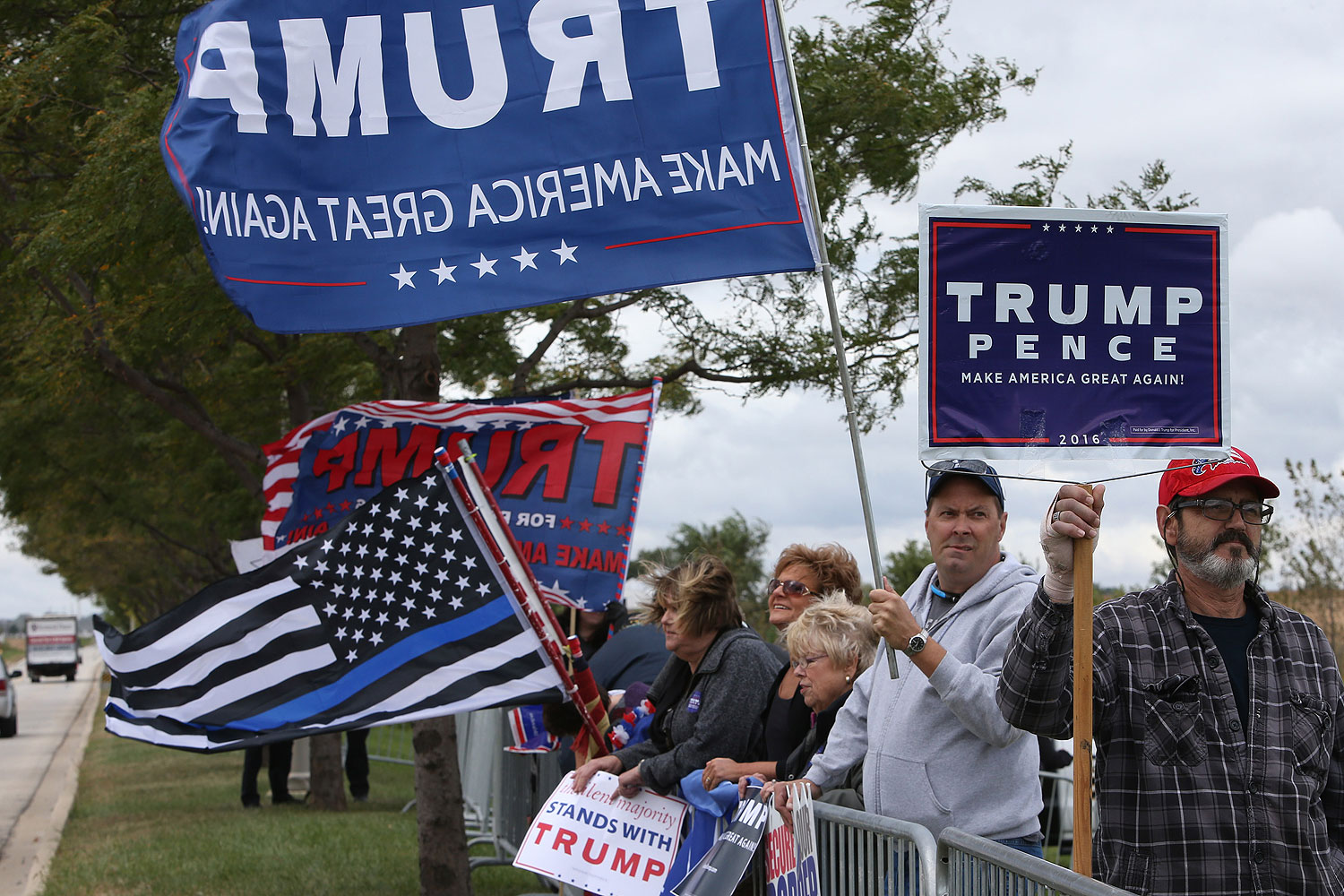When I was doing research for my last post, I came across something I'd written prior to Donald Trump's victory in the Illinois primary. It had some interesting data from a Capitol Fax poll.
| Voting record | Trump | Cruz | Rubio | Kasich | Undecided |
|---|---|---|---|---|---|
| 1 of 3 Republican | 45% | 11% | 18% | 9% | 12% |
| 2 of 3 | 38% | 15% | 24% | 9% | 10% |
| 3 of 3 | 33% | 21% | 22% | 10% | 10% |
Whether or not someone had voted for a Republican once out of the last three presidential elections was the best predictor of whether an Illinoisian would vote for Donald Trump in the primary. Not sex, but close—43 percent of men surveyed supported Trump. Not region—his support varied one percentage point across Chicago, suburban Cook County, the collar counties, and downstate (not the case for his opponents).
Using data from Civis Analytics, a Chicago-based firm founded by Obama campaign veterans, the New York Times's Nate Cohn wrote about this at the end of last year: Trump's highest shares of the vote came from self-identified Republicans who were registered as Democrats (43 percent), unregistered Republicans (40 percent), and potential voters with a "turnout score," representing likelihood that they would vote in the general election, of 0 to 20, the lowest. Civis Analytics also found that Trump was strongest among voters with a comparative Democratic partisanship score (slightly more than the "moderate" in the race, John Kasich) and a comparatively low likelihood of voting.
This is what I wrote at the time:
It’s a difficult profile for the GOP to turn down: a candidate who has broad support across what is arguably the most representative state in the country, and who appeals most to voters who have been least likely to vote Republican in the past three elections.
I'd say I told you so if I'd told you anything other than "these are interesting patterns." So… I told you they were interesting patterns. (When Trump won Illinois, his support was, perhaps, surprisingly broad—and actually weaker in places one might expect it to be strong.)
What happened? Wired recently followed up with Civis (emphasis mine):
Whereas many election reviews have laid Clinton’s loss at the feet of Democratic groups like African-Americans, who turned out in smaller numbers than they did for Obama, Civis says its early research shows the problem was as much about an unexpectedly high number of former Democratic voters who switched their allegiance to Donald Trump. Civis says it sees evidence that one specific group of voters, a group that disproportionately switched allegiances for Donald Trump, was underrepresented in the polls to begin with.
It makes this piece from 2015 about Pennsylvania—where Trump voters turned out at an astonishing rate—seem prescient (emphasis mine):
Sracic—who frankly admits he obsesses over opinion polls—wonders whether these voters are even represented in the endless presidential surveys: “If people aren’t registered voters, they won’t be picked up by most polls. If they are registered voters but don’t normally vote, they may be eliminated by ‘likely voter’ screens pollsters use.” Romney lost Pennsylvania in 2012 by about 300,000 votes out of about 5.5 million cast; in Ohio, he lost by less than 200,000. “So bringing new people in can make a difference,” Sracic said.
Potentially more significant, however, are those voters who “flip”—Sracic’s second category. “Remember,” he said, “taking a Democratic voter and having them vote Republican is both a +1 and a -1. In other words, if Romney lost Pennsylvania by 300,000 voters, all you have to do [this time] is flip slightly more than 150,000 votes.” Between Ohio and Pennsylvania, if approximately 225,000 voters (out of the 11 million who are expected on Election Day) switch parties, they could tip the entire election.
Today Kyle Kondik of the University of Virginia Center for Politics noticed that in Pennsylvania's Appalachian counties—52 out of the state's 67—Trump added almost 320,000 votes to Romney's total.
In short, the picture forming now is that Trump was particularly good at flipping voters and at reaching disconnected voters—those who are hard to reach by pollsters, unlikely to vote, and probably as a result, created a big polling blind spot. You could see the outline in the mirror; it was just closer than it appeared.



